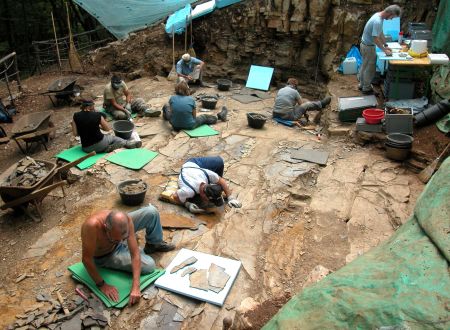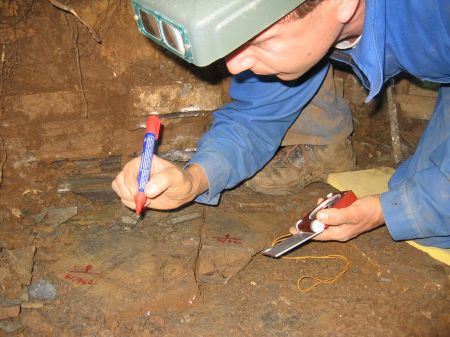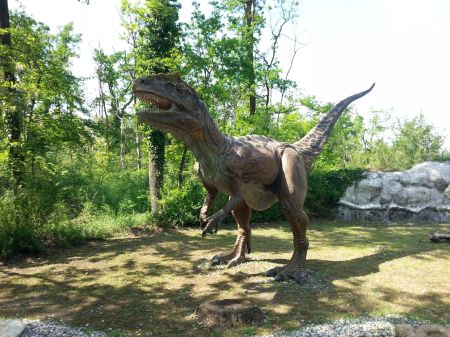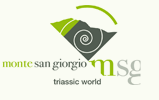Recent studies
Since 2006, following a change in the legal framework and the inclusion of Monte San Giorgio in the UNESCO World Heritage List (2003 and 2010), the Museo cantonale di storia naturale di Lugano has launched new excavation projects while also undertaking coordination of research on the Swiss side of the mountain. Under the leadership of Rudolf Stockar, new excavations have been conducted in the Cassina beds, Kalkschieferzone and Sceltrich beds, the latter, a fossiliferous level in the upper Meride Limestone never before studied. The new investigations have so far brought to light many fish, marine and terrestrial invertebrates and plants (including the new conifer Elatocladus cassinae and the new insect Dasyleptus triassicus and the decapod crustacean Meridecaris ladinica). Thanks to increasingly accurate methods of investigation and the use of more sophisticated technologies, it has also been possible to analyse in detail the uni-celled planktonic organisms present, the role of bacterial communities, as well as the spores and pollen of land plants.
Palaeontological excavation of the Museo cantonale di storia naturale di Lugano at Cassina (photo R. Stockar, 2011)

Rudolf Stockar on the excavation in Cassina (photo MCSN, 2006)

Thanks to the commercial exploitation of the rocks from Monte San Giorgio, scientists have also been able to study sediments deposited 50 million years later, in the Lower Jurassic. A number of projects have focused on the “marble” found in the Arzo quarries and the fossils they contain, notably by Felix Wiedenmayer (Basel; on ammonites), Fritz Neuweiler and Daniel Bernoulli (Göttingen and Basel; on stromatactis), Heinz Sulser and Heinz Furrer (Zurich; on brachiopods) and Hans Hess (Basel; on crinoids), as well as the prominent neptunian dykes.
In 1996, at a quarry of Saltrio on the Italian side of Monte San Giorgio, the remains of a new dinosaur were discovered. These were studied and reconstructed by the palaeontologist Cristiano Dal Sasso from the Museo Civico di Storia Naturale di Milano, who gave it a provisional name of Saltriosaurus (nomen nudun). At least 8 m long, Saltriosaurus is the largest carnivorous dinosaur discovered in Italy to date.
Life reconstruction of Saltriosaurus, displayed in the Parco della Preistoria at Rivolta d'Adda (Wikimedia Commons)





